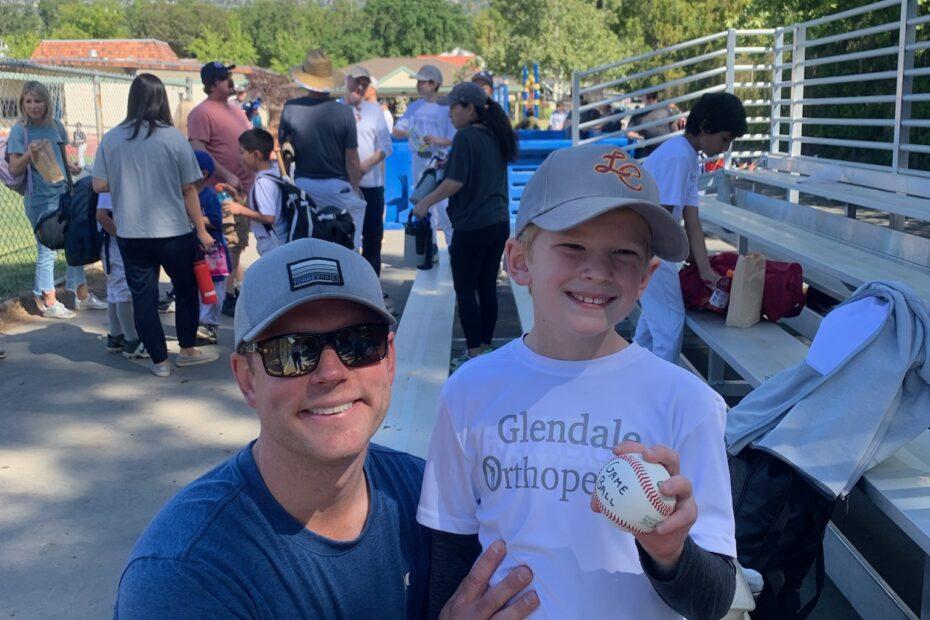Baseball is back! Southern California is one of the preeminent locations for baseball, from little league to the big leagues. We are fortunate to live in a climate that allows for year-round play. This year, Major League Baseball created new rules to speed up play and create more excitement in the game. Baseball and softball players are prone to certain injuries due to the unique stress placed on their arms during the throwing motion
The average baseball player in Southern California plays nine months a year. That is a lot of repetitive stress on the throwing shoulder, especially in pitchers. You may hear the terms ‘dead arm’, rotator cuff tear, shoulder impingement, or muscle strain. Let’s review the shoulder anatomy and conditions associated with the overhead throwing motion.
The shoulder joint is a minimally constrained ball and socket joint. Think of a golf ball on a golf tee, the socket is shallow and allows for the freedom of movement of the shoulder joint. To help keep the shoulder joint stable, we rely mainly on soft tissues. A structure called the labrum is a cartilage bumper that is located on the perimeter of the socket, like a washer. This structure provides stability to the joint, is the site of attachment for the ligaments that connect the shoulder joint together, and is the site of attachment of one of the biceps tendons. Repetitive throwing places stress on the biceps, which then pulls on the top of the labrum. A tear of the labrum near where the biceps attaches is called a SLAP tear (Superior Labrum, Anterior to Posterior). This tear can lead to deep shoulder pain, decreased velocity, and the ‘dead arm’ phenomenon.
The rotator cuff is also responsible for the stability of the shoulder. The rotator cuff is a series of four muscles that attach to the top of the ball that raises and rotate our shoulder. In throwers, due to the excessive external rotation stress placed on the shoulder joint, the undersurface of the rotator cuff can get damaged. This tear, combined with the tearing of the labrum, is termed internal impingement. Internal impingement can also lead to deep shoulder pain, decreased velocity, and weakness.
Initial evaluation shoulder of shoulder pain in throwers should be assessed by an orthopedic surgeon or sports medicine specialist. Often, a lack of internal rotation contributes to shoulder pain. This is called glenohumeral internal rotation deficit, or GIRD, for short. Routine stretching and strengthening of the shoulder is recommended to prevent injury. I recommend doing the sleeper stretch as part of your warm up.
Treatment is usually non-surgical and consists of physical therapy stretches and strengthening, and a throwing program. If PT fails to resolve the issue, surgery may be indicated. Surgery may involve an arthroscopic ‘clean up’ procedure, labrum repair, or re-routing the biceps (biceps tenodesis).
If you are an overhead-throwing athlete with shoulder pain, please review the information on our website and call for an evaluation.
